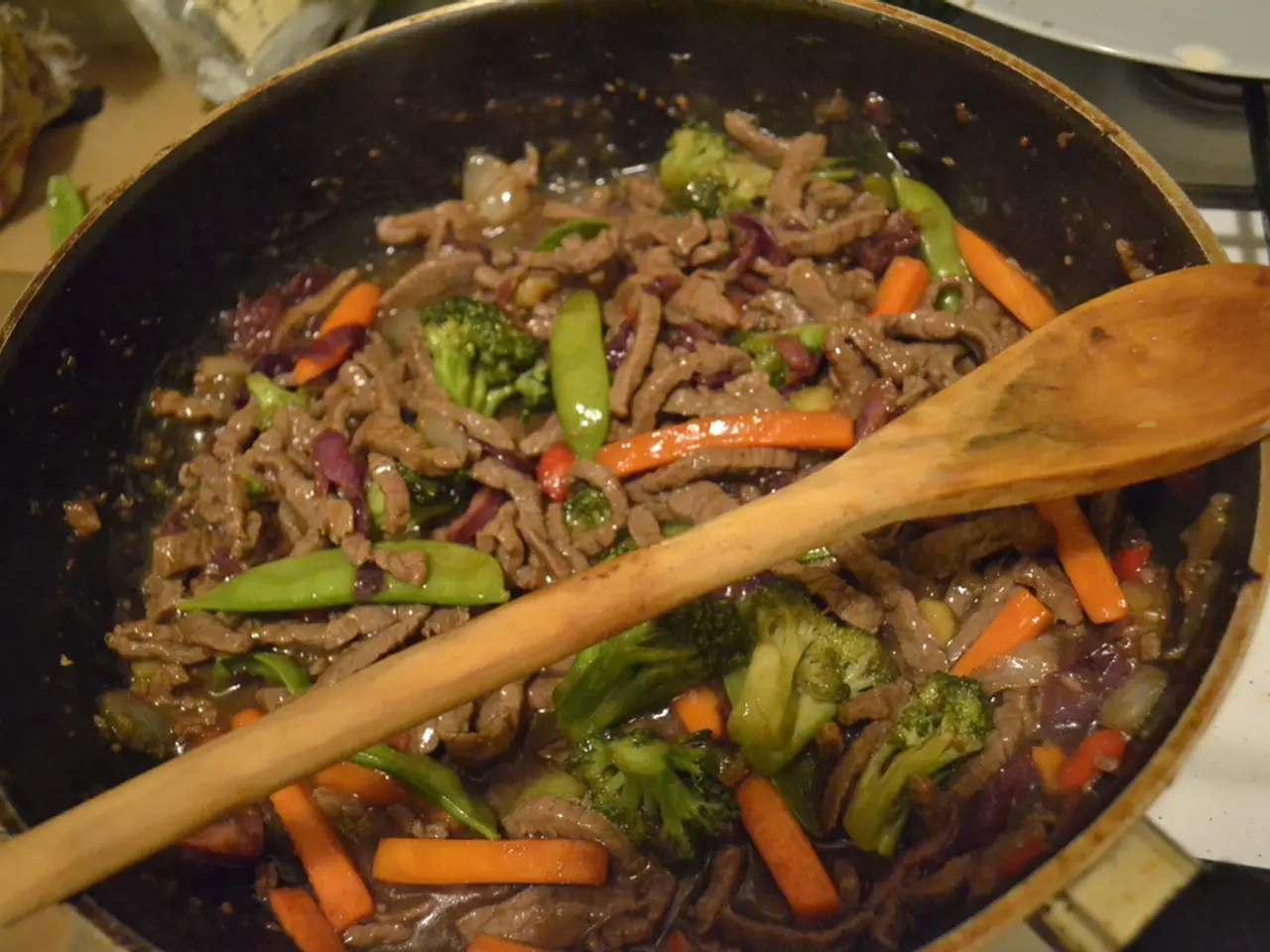Diet strategy for high cholesterol: Defining it, suitable foods, and additional details
Managing High Cholesterol: A Guide to Heart-Healthy Eating
High cholesterol levels can lead to heart disease and other health conditions. To help manage high cholesterol and reduce the risk of heart disease, dietary recommendations are crucial. These strategies focus on promoting foods and habits that lower LDL ("bad") cholesterol, increase HDL ("good") cholesterol, and reduce inflammation and other cardiovascular risk factors.
One key dietary strategy is increasing soluble fiber intake from foods like beans, lentils, oats, apples, and citrus fruits. Soluble fiber slows cholesterol absorption in the intestines, effectively lowering LDL cholesterol.
Another important aspect is choosing healthy fats such as monounsaturated and polyunsaturated fats found in nuts, avocado, olive oil, and fatty fish rich in omega-3 fatty acids. These fats help reduce LDL cholesterol and raise HDL cholesterol, improving the overall lipid profile.
Limiting saturated fats and avoiding trans fats found in red meat, full-fat dairy, processed and fried foods is also recommended. These fats raise LDL cholesterol and contribute to inflammation.
Incorporating plant sterols and stanols from fortified foods and naturally occurring sources is beneficial as they block cholesterol absorption in the gut.
Emphasizing a heart-healthy dietary pattern, such as the Mediterranean diet, is also recommended. This dietary pattern emphasizes fruits, vegetables, whole grains, legumes, nuts, olive oil, and fish while limiting red meat and processed foods. It has been extensively shown to lower cardiovascular risk through its beneficial effects on cholesterol and inflammation.
Additional lifestyle factors such as regular physical activity complement dietary efforts by increasing HDL cholesterol and improving cardiovascular health.
A healthy diet for managing high cholesterol includes replacing saturated fats with unsaturated fats, limiting dietary cholesterol, and eating a diet high in fruits, vegetables, low-fat dairy, poultry, whole grains, beans, fish, and nuts. Cooking with vegetable oils, such as olive oil, instead of butter is a tip for managing high cholesterol.
The DASH (dietary approaches to stop hypertension) diet is also recommended for people with or at risk of heart disease. This eating plan emphasizes whole foods while limiting sodium, saturated fat, red meat, and sugar.
Lean proteins, whole grains, and fat-free or low-fat dairy products are included in a healthy diet for managing high cholesterol. Plant-based protein sources, such as tofu or tempeh, are an option for managing high cholesterol.
Egg yolks and shellfish should be limited to help control cholesterol. High levels of LDL cholesterol increase the risk of atherosclerosis and heart disease.
The body naturally produces cholesterol it needs for optimal functioning. However, a diet rich in the foods mentioned above can help manage high cholesterol levels and reduce the risk of heart disease.
[1] American Heart Association. (2019). Diet and lifestyle recommendations to manage high cholesterol. Retrieved from https://www.heart.org/en/health-topics/cholesterol/managing-high-cholesterol-with-lifestyle-changes/diet-and-lifestyle-recommendations-to-manage-high-cholesterol
[2] Mayo Clinic. (2021). High cholesterol: Lifestyle changes to lower your cholesterol. Retrieved from https://www.mayoclinic.org/diseases-conditions/high-blood-cholesterol/in-depth/lower-cholesterol/art-20045844
[3] National Heart, Lung, and Blood Institute. (2020). Lowering Your Cholesterol with TLC Diet. Retrieved from https://www.nhlbi.nih.gov/health/educational/heart/hbp/treat/treat-tlc.htm
[4] American College of Cardiology. (2021). Diet and Lifestyle Recommendations for Lowering Cholesterol. Retrieved from https://www.acc.org/latest-in-cardiology/articles/2021/02/01/10-ways-to-lower-your-cholesterol
[5] Harvard T.H. Chan School of Public Health. (2020). Lower Your Cholesterol with These 5 Dietary Changes. Retrieved from https://www.hsph.harvard.edu/nutritionsource/2019/04/25/lower-your-cholesterol-with-these-5-dietary-changes/
- A registered nutritionist may establish a personalized plan that prioritizes foods for heart-healthy eating, included in this advice are foods rich in soluble fiber, healthy fats, and plant sterols to help manage high cholesterol.
- Naive dieters should avoid saturated and trans fats found in certain foods like red meat, full-fat dairy, and processed foods, which are linked to heart disease and weight loss challenges.
- Scientific research supports the benefits of adopting other nutrition plans, such as the Mediterranean diet, which is proven to reduce cardiovascular risk through cholesterol and inflammation management.
- Embracing a health-and-wellness lifestyle that includes regular fitness-and-exercise activities, in addition to a heart-healthy diet, is essential for overall cardiovascular health and healthy weight loss.
- For those at risk of other heart diseases, it is pivotal to limit egg yolks and shellfish to maintain balanced cholesterol levels.
- In the overall approach to managing high cholesterol, one should prioritize eating plenty of fruits, vegetables, whole grains, legumes, nuts, poultry, low-fat dairy, beans, fish, and lean proteins.
- Foodandfoodbenefits literature strongly advocates for cooking with vegetable oils, like olive oil, instead of butter, as a step toward heart-healthy eating.
- The DASH diet, known for regulating blood pressure and lowering cholesterol, is another recommended eating pattern for people with or at risk of heart disease.
- Healthy lifestyle choices, including following dietary recommendations and monitoring progress through organizations like the American Heart Association and Mayo Clinic, are essential steps to reduce the risk of heart disease and other related health conditions.




